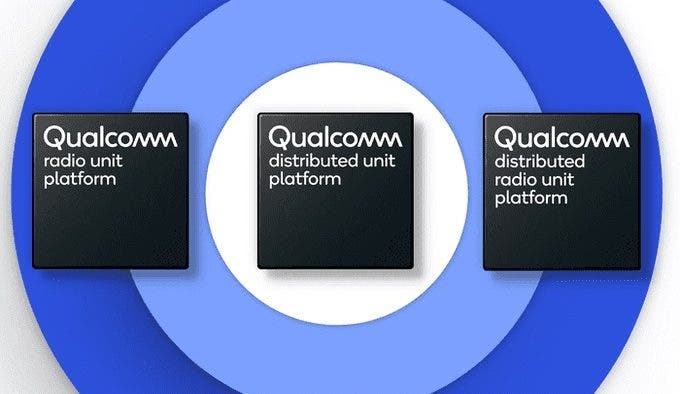Qualcomm recently announced the launch of a series of 5G network infrastructure chip platforms for a wide range of deployment scenarios from macro base stations that support massive MIMO to compact small base stations. With this move, the American company accelerates the cellular ecosystem of virtualization and interoperability transformation of Radio Access Networks (RAN). As you guess, 5G is the main ‘sponsor’ of its development.
What Platforms We Are Talking About?
Qualcomm has launched three new 5G RAN platforms: Qualcomm radio frequency unit platform, Qualcomm distributed unit platform and Qualcomm distributed radio unit platform. The three platforms are the first batch of solutions announced in the world to support leading mobile operators to deploy a new generation of open converged virtual RAN (vRAN) networks. The above-mentioned platforms are designed to support communication equipment manufacturers to transform public networks and wireless enterprise private networks into innovative platforms to realize the full potential of 5G.

The 5G RAN series platform comes to support existing and emerging network equipment manufacturers to accelerate the deployment and commercialization of vRAN equipment and features. Also, it should meet the 5G needs of public and private networks. The above-mentioned new platform provides a fully scalable and highly flexible architecture for the deployment of macro base stations and small base stations. It supports all 5G function division options between distributed units (DU) and radio units (RU). This has become Qualcomm’s existing strong supplement to the 5G RAN platform products of small base stations.
The main highlights of Qualcomm 5G RAN series platforms
Macro base stations and small base stations: The above solutions can provide scalable support for a wide range of network infrastructures, from macro base stations that support massive MIMO to small base stations.
High-performance modem and radio frequency system: Qualcomm’s 5G RAN platform uses a complete 5G modem and radio frequency system. It includes baseband, transceiver, radio frequency front end and antenna panel. So it can achieve excellent wireless performance including high power and large capacity.
High-performance virtualization products that support integrated hardware acceleration: The flexible vRAN architecture integrates hardware accelerators. They support modem and fronthaul processing. It comes to support high-throughput and low-latency network processing. It comes with excellent energy efficiency and compact device design.
Integrated solutions supporting sub-6GHz and millimeter wave: In this regard, distributed unit (DU) supports both sub-6GHz and millimeter wave basebands. And radio unit (RU) supports global 5G sub-6GHz and millimeter wave frequency bands and 4G frequency bands.
Flexible and extensible interoperability interface: It supports all major 5G functional division options between DU and RU. Thereby, it decouples the RAN into standard-compliant and interoperable modular components.
The Bottom Line
Qualcomm is working with industry-leading mobile operators to accelerate the transition to next-generation communications equipment. The first engineering samples of the Qualcomm 5G RAN platform should be available in the first half of 2022.





